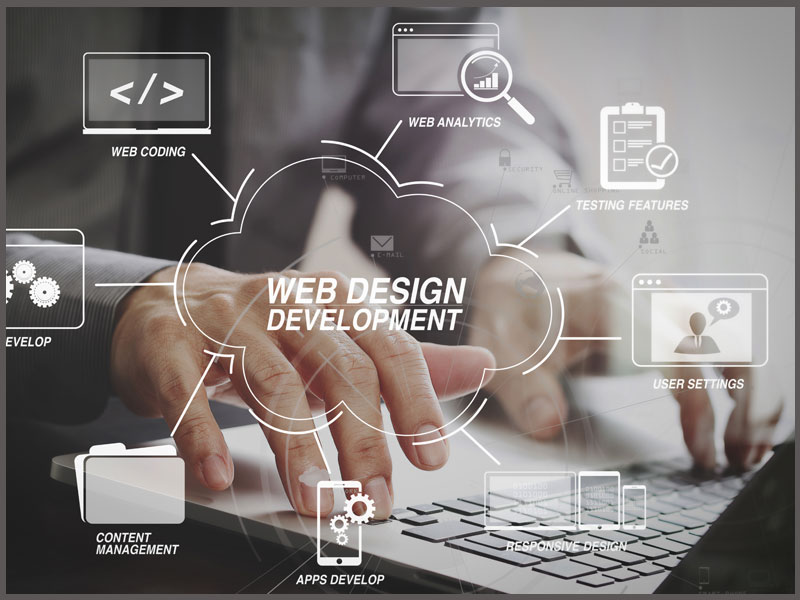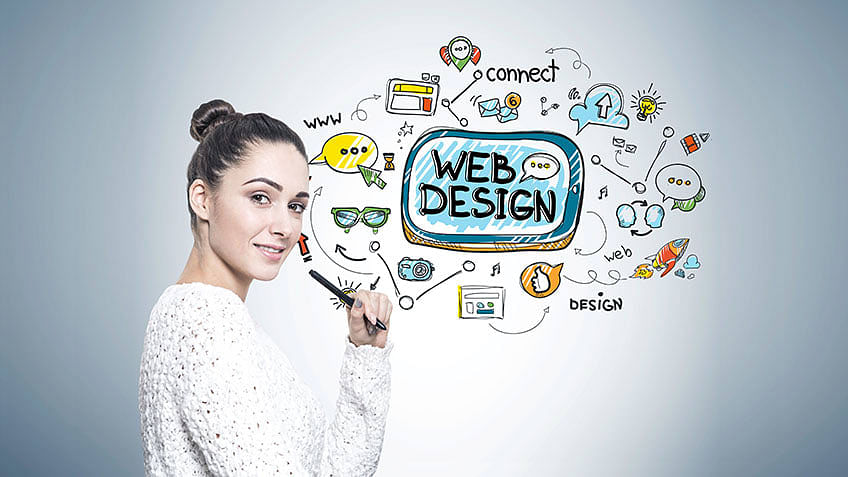Aligned Position Web Design: Delivering High-Quality, User-Friendly Web Designs for Every Industry
Aligned Position Web Design: Delivering High-Quality, User-Friendly Web Designs for Every Industry
Blog Article
The Very Best Types of Web Style to Boost Customer Experience and Interaction
In the ever-evolving landscape of digital interaction, the efficiency of website design substantially influences individual experience and interaction. Various layout strategies, such as minimal, responsive, and interactive designs, each deal distinct benefits that can satisfy varied user needs. Comprehending which kinds of Web layout best serve these objectives can be pivotal for organizations aiming to improve customer fulfillment and retention. Nevertheless, the concern remains: which layout elements really resonate with users and foster purposeful engagement? The exploration of these concepts exposes essential understandings that may redefine your method to Web layout.
Minimal Website Design
As digital landscapes end up being increasingly messy, minimalist Web layout has become a powerful strategy to boosting user experience. This style approach prioritizes simpleness, concentrating on essential elements while eliminating unneeded diversions. By utilizing sufficient white room, uncomplicated navigating, and a restricted color combination, minimalist design fosters quality and guides customer attention to essential content.
The core principle of minimal Web style is to create a smooth communication for customers. By minimizing cognitive lots, customers can quickly realize details without really feeling bewildered. This direct technique not only boosts usability however likewise motivates interaction, as site visitors are more probable to explore a website that is simple and aesthetically appealing to navigate.
Furthermore, minimal design typically emphasizes typography and images, making use of these aspects purposefully to share messages effectively. This concentrate on necessary parts can improve brand identification and develop a memorable user experience. Basically, minimal Web style is not simply a trend; it is a thoughtful approach that acknowledges the significance of user-centered layout. By removing peripheral aspects, designers can create an extra engaging, reliable, and pleasurable Web experience for all users.
Responsive Web Design
In today's diverse electronic environment, receptive website design has come to be vital for creating a seamless customer experience across a multitude of devices. As users accessibility websites on smart devices, desktops, laptop computers, and tablets, the capability of an internet site to adapt its layout and content to different screen dimensions and resolutions is critical.
Receptive Web design utilizes adaptable grids, photos, and CSS media inquiries to ensure that Web material exists ideally, regardless of the gadget used. This technique not only enhances the aesthetic allure of a web site however likewise substantially enhances usability. Users are most likely to involve with a website that uses a regular experience, as it eliminates the irritation of having to focus or scroll excessively.
By adopting receptive design, companies can enhance their exposure and get to a more comprehensive audience. In recap, responsive Web style is a basic method that boosts user experience, engagement, and overall fulfillment.
Interactive Web Layout
Receptive Web layout prepares for enhancing individual experience, yet interactive website design takes this an action further by engaging users in a much more dynamic way - Aligned Position Web Design. By including elements such as computer animations, clickable models, and real-time responses, interactive Web layout captivates users, drawing them into a richer surfing experience
This method not only promotes engagement yet additionally urges customers to explore content proactively instead of passively consuming it. Methods such as gamification, where customers gain benefits for finishing jobs, can dramatically improve the moment invested in a site and enhance general satisfaction. Moreover, interactive attributes can simplify complex info, making it much more digestible and pleasurable.

Integrating interactive design components can likewise cause greater conversion prices, as individuals are most likely to involve with a website that proactively involves them. Aligned Position Web Design. Eventually, interactive website design transforms user experiences right into unforgettable trips, guaranteeing try this out that visitors return time after time
Flat Style
Defined by its minimalistic method, flat style stresses simplicity and capability, removing unneeded aspects and concentrating on essential functions. This style approach prioritizes usability, making sure that users can browse interfaces effortlessly and efficiency. By employing a tidy aesthetic, flat design eliminates the mess typically discovered in more elaborate designs, thereby boosting user emphasis on web content check here and functionality.
The hallmark of level design exists in its usage of bold shades, basic typography, and geometric shapes. These components add to a visually enticing user interface that is both contemporary and approachable. Furthermore, flat style fosters a feeling of quality, permitting customers to determine essential actions and details without diversion.
Furthermore, flat layout is specifically effective in responsive website design, as its simplicity converts well throughout different gadgets and screen dimensions. The lack of intricate structures and gradients minimizes filling times, which is vital for preserving individual interaction. As digital landscapes remain to advance, flat layout remains a pertinent option for developing straightforward web sites that boost overall experience. By concentrating on vital attributes, level layout not only meets user requirements however likewise encourages smooth communication, making it an important component of reliable Web design strategies.
Adaptive Web Design
Adaptive Web style tailors the customer experience by creating several fixed designs tailored to various display dimensions and visit this site right here gadgets. Unlike responsive design, which fluidly changes a solitary layout, adaptive layout uses distinctive formats for particular breakpoints, guaranteeing ideal discussion on various systems. This method permits designers to focus on the distinct characteristics of each tool, improving use by providing specifically what users need based upon their context.
One of the primary advantages of flexible Web style is its ability to optimize load times and performance. By serving customized web content and photos that fit the individual's tool, web sites can minimize information usage and improve loading rates. This is particularly advantageous for customers with slower connections or restricted information strategies.

Additionally, adaptive style facilitates an extra regulated and constant branding experience. Since developers develop several formats, they can make sure that the visual elements straighten with the brand's identification across different platforms - Aligned Position Web Design. This leads to a natural user experience, boosting engagement and promoting individual retention
Verdict
Minimal style fosters clarity and focus, while receptive style makes certain versatility across different gadgets, promoting availability. Collectively, these style approaches contribute to the production of straightforward settings that not just improve fulfillment but also drive greater conversion prices, emphasizing their important significance in contemporary Web layout methods.
.png)
Minimal style cultivates clearness and emphasis, while receptive design ensures adaptability throughout different gadgets, advertising access. Jointly, these layout comes close to add to the creation of easy to use atmospheres that not just improve fulfillment but also drive higher conversion prices, emphasizing their important significance in modern Web style techniques.
Report this page